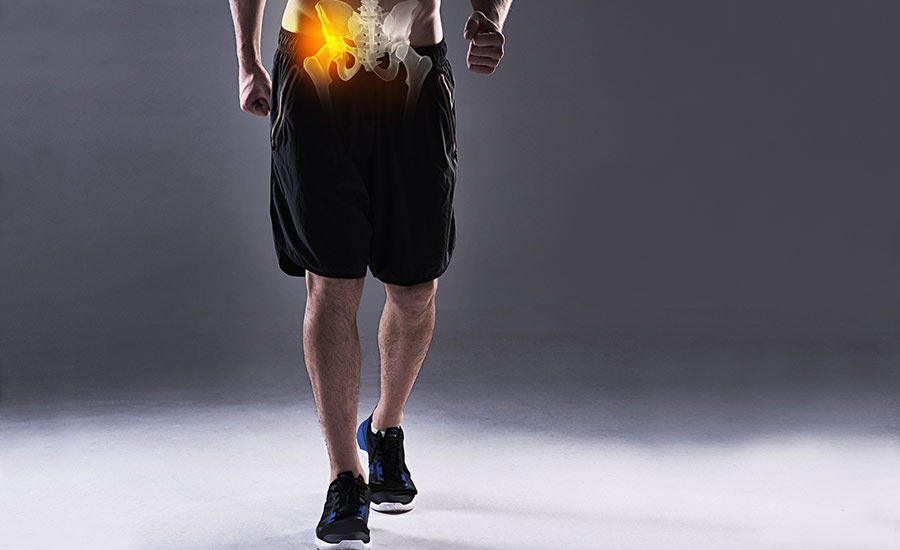
Chronic pain can be a debilitating handicap that hinders daily activities and diminishes quality of life. Research shows that around 20% of American adults suffer from chronic pain on most days or daily.
However, the field of pain management offers specialized techniques and individualized treatment plans, aimed at alleviating discomfort and restoring functionality.
Pain management specialists are at the forefront of this field, offering a focus on the patient’s unique needs and type of pain to come up with personalized treatment plans.
We share all you need to know about pain management specialists, including the types of pain they treat and the methods they use to enhance quality of life for their patients.
What Are Pain Management Specialists?
Pain management specialists are medical professionals who focus on treating patients who are experiencing chronic or acute pain. They come from various medical backgrounds, including anesthesiology, neurology, and psychiatry.
What Do Pain Management Specialists Do?
Pain management specialists are trained in the evaluation, diagnosis, and treatment of various types of pain. Their work involves a comprehensive approach, focusing on the whole person and the root of the problem, rather than just the symptoms of pain.
Here’s a look at what pain management specialists do:
- Assess and diagnose: Pain management specialists use various techniques to identify the source of the pain. This can involve a detailed patient history, a physical examination, and diagnostic tests such as MRIs, X-rays, and nerve conduction studies.
- Develop treatment plans: Once the source of the pain is identified, the specialist designs a comprehensive and individualized treatment plan for pain management. This could include medication, physical therapy, psychological therapy, and interventional procedures.
- Perform interventional procedures: Many pain management specialists are skilled in various procedures that help manage pain, such as nerve blocks, spinal injections, and minimally invasive surgeries.
- Coordinate care: As part of a multidisciplinary approach to pain management, these specialists often work in a team alongside other healthcare professionals, such as physiotherapists, psychologists, and surgeons. These professionals coordinate care to ensure the patient’s pain management plan aligns with their overall healthcare plan from other types of physicians.
- Educate patients: Pain management specialists provide patients with information about their condition and the factors contributing to their pain. They explain the different treatment options available and work with the patient to develop strategies for managing pain on a day-to-day basis.
- Research and keep up with new techniques: Pain management specialists stay up to date with the latest research and developments in pain management, including new treatments and techniques that may benefit their patients.

By keeping up to date with treatment innovations, pain management specialists can provide the best possible care, often with quicker recovery times, fewer side effects, and better overall results.
Types of Pain Treated by Specialists in Pain Management
Specialists in pain management, including pain medicine physicians, anesthesiologists, neurologists, and physical therapists, are equipped to diagnose and treat a wide range of pain conditions.
The most common types of pain treated by pain management specialists include:
- Chronic pain: Ongoing pain that persists beyond the expected time frame of healing. It can be continuous or intermittent.
- Acute pain: Typically a response to a specific injury or illness, acute pain is often sharp and lasts for a shorter period of time, compared to chronic pain.
- Neuropathic pain: Resulting from damage to the nervous system, this type of pain can include conditions like diabetic neuropathy, postherpetic neuralgia, and trigeminal neuralgia.
- Musculoskeletal pain: This includes pain in muscles, ligaments, and tendons, often related to injuries, overuse, or underlying conditions like arthritis.
- Spinal pain: Pain in the neck, mid-back, or low back, often due to conditions like herniated discs, spinal stenosis, or degenerative disc disease.
- Cancer pain: Pain associated with cancer itself or cancer treatment, which can be complex and require specialized care.
- Headache and migraine pain: Pain from chronic headaches and migraines, which can be debilitating and require specific treatment approaches.
- Joint pain: Pain from arthritis or other joint disorders, which can lead to chronic pain in areas like the knees, hips, shoulders, or hands.
- Fibromyalgia: A chronic condition characterized by widespread pain and tenderness.
- Complex regional pain syndrome (CRPS): A complex condition leading to chronic pain, usually in an arm or leg.
- Pelvic pain: This can include chronic pain conditions affecting the bladder, reproductive organs, or general pelvic region.
- Post-surgical pain: Persistent pain following surgery, which may become chronic if not managed properly.
- Facial pain: Pain caused by conditions like temporomandibular joint (TMJ) disorders.
- Phantom limb pain: Pain that feels like it’s coming from a limb that has been amputated.
Treatment for these conditions can include medication, physical therapy, psychological support, and various invasive or non-invasive techniques, tailored to the patient’s specific needs and underlying condition.
Top Techniques Used by Advanced Pain Management Specialists
Pain management specialists employ a wide range of techniques to diagnose, manage and alleviate pain. These methods can be categorized into non-invasive, minimally invasive, and invasive techniques.
Non-Invasive Techniques
Non-invasive pain management techniques are methods used to alleviate pain without breaking the skin or entering the body. These techniques are often favored because they typically involve lower risks and fewer side effects, compared to more invasive procedures.
The most common non-invasive pain management techniques include:
- Physical therapy: Physical therapy involves customized exercises and stretches aimed at improving mobility, strength, and overall function. Manual therapy, hot and cold treatments, and modalities like ultrasound or electrical stimulation may also be used.
- Pharmacotherapy: This approach employs over-the-counter or prescription medications to alleviate pain. Different types of medications, such as non-steroidal anti-inflammatory drugs (NSAIDs), acetaminophen, or occasionally opioids, may be used depending on the pain’s nature and intensity.
- Behavioral therapy: This can include psychological methods such as cognitive-behavioral therapy (CBT), relaxation techniques, mindfulness, and biofeedback. These approaches help patients develop coping strategies to manage pain and address emotional factors that may exacerbate pain.
- Acupuncture: This is an ancient Chinese medicine technique that involves inserting very thin needles into specific points on the body to stimulate healing and reduce pain.
- Massage therapy: Massage can relieve muscle tension and stress, increase blood flow, and promote relaxation — all of which can assist in pain management.
- Hot and cold therapy: Applying hot or cold compresses to the affected area can help provide pain relief. Heat can relax and loosen tissues and stimulate blood flow, while cold can reduce inflammation and numb the area.
Minimally Invasive Techniques
Minimally invasive techniques are medical procedures that are performed through small incisions or body openings, providing a middle ground between non-invasive and more invasive therapeutic approaches.
These techniques typically offer faster recovery times, less discomfort, and a reduced risk of complications compared to traditional open surgeries.
The most common minimally invasive pain management techniques include:
- Nerve blocks: Anesthetic medications are injected near specific nerves to temporarily block pain signals. They can target various nerves in the body, depending on the location of the pain.
- Epidural steroid injections: Often used for spinal pain, steroids are administered into the epidural space surrounding the spinal cord. They can reduce inflammation and alleviate pain in the neck, back, arms, or legs.
- Radiofrequency ablation: In this procedure, an electrical current is used to heat a small area of nerve tissue, decreasing pain signals from that area. Radiofrequency ablation is often used for chronic lower back and neck pain, or arthritic joint pain.
- Facet joint injections: These injections are administered into the facet joints of the spine, which can cause pain when inflamed. The steroids and anesthetics injected can reduce inflammation and provide pain relief.
- Kyphoplasty and vertebroplasty: Both of these techniques are used to treat spinal compression fractures. Vertebroplasty involves injecting medical cement into the fractured vertebra, while Kyphoplasty includes inflating a balloon-like device to restore height before cementing.
Invasive Techniques
Invasive pain management techniques refer to procedures that involve significant penetration or surgical intervention in the body.
These techniques are typically reserved for chronic, severe, or complex pain conditions that have not responded to non-invasive or minimally invasive treatments.
The most common invasive pain management techniques include:
- Spinal cord stimulation: While the implantation can be considered minimally invasive, adjustments and maintenance are more invasive. Electrodes are implanted near the spinal cord, and electrical currents are used to interrupt pain signals to the brain.
- Intrathecal pump implants: These devices are surgically implanted to deliver pain medications directly into the spinal fluid. They can provide targeted pain relief with lower systemic doses of medication.
- Deep brain stimulation: This involves implanting electrodes into specific areas of the brain to alter the electrical signaling involved in pain. It’s typically used for very complex, chronic pain conditions.
- Surgical intervention for structural problems: If the pain is caused by a structural problem that requires surgical correction, this intervention can include procedures like joint replacements, spinal fusion, or surgery to remove tumors or damaged tissue.
Surgical intervention in pain management is usually considered a last-resort option when other non-invasive or minimally invasive techniques have failed to provide relief for chronic or severe pain conditions.

Meet Our Pain Management Specialists at OrthoEast
At OrthoEast, our team consists of top pain management specialists in New Jersey.
If you are in pain, our team will conduct a thorough assessment of your medical condition and health background to develop a comprehensive treatment program tailored to your needs.
During your initial pain management consultation, we will gather an extensive medical history, including:
- Current medications, with details on dosage and how often they are taken
- Documentation of prior surgeries and medical procedures
- Existing care plans from your Primary Care Physician (PCP) or other healthcare providers
- Up-to-date diagnostic images or tests from recent years
Our pain management specialists include Dr. Pamela D’Amato and Dr. Anil K. Sharma, who focus on pain relief and improving each patient’s quality of life.
Our team of orthopedic physicians also specialize in a variety of areas, including:
- Minimally Invasive Spine Surgery
- Alternatives to Fusion
- Carpal Tunnel Surgery
- Knee Repair & Preservation
- Hip Repair & Preservation
- Shoulder Repair & Preservation
Whether you’re suffering from pain related to your knee, hip, shoulder, elbow, hand or ankle, or a painful condition like arthritis, we’ll find the treatment plan that’s right for you.



